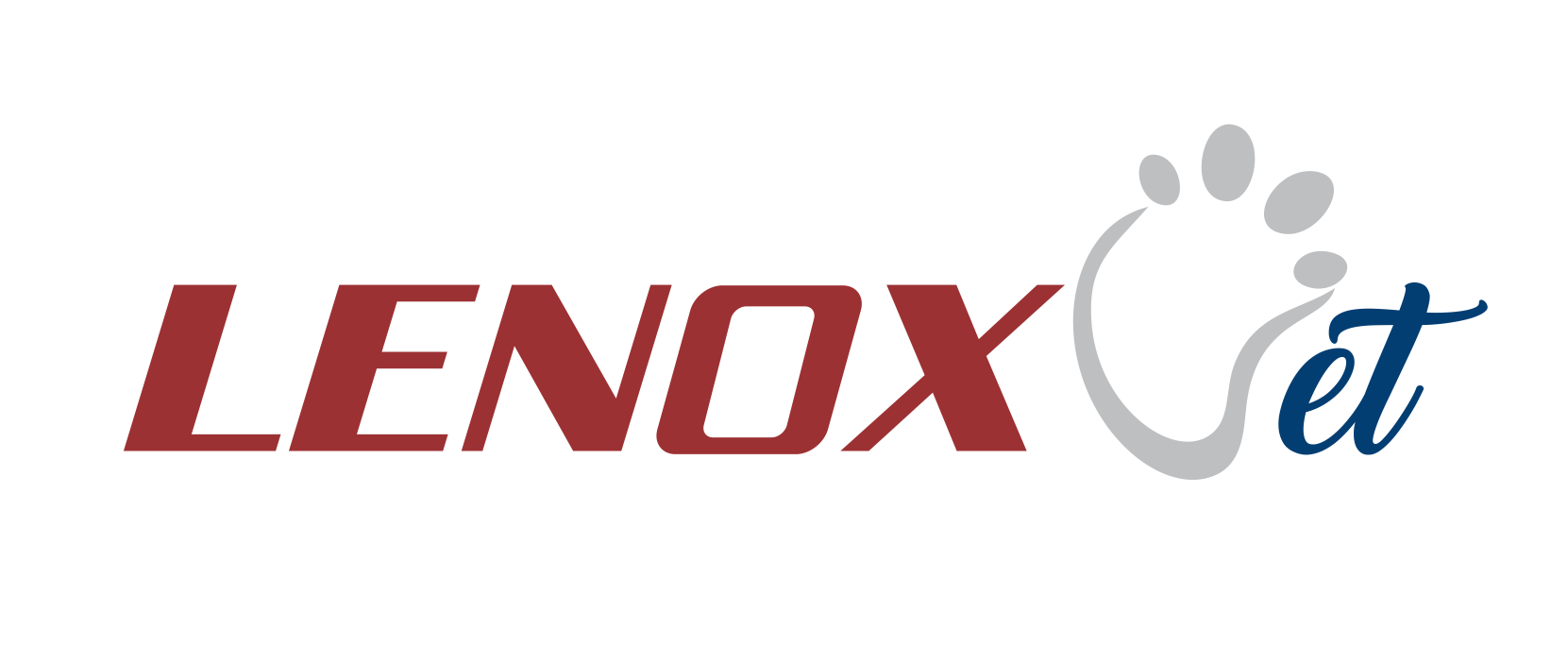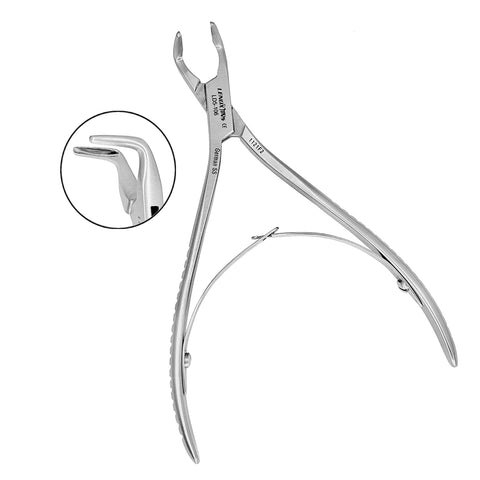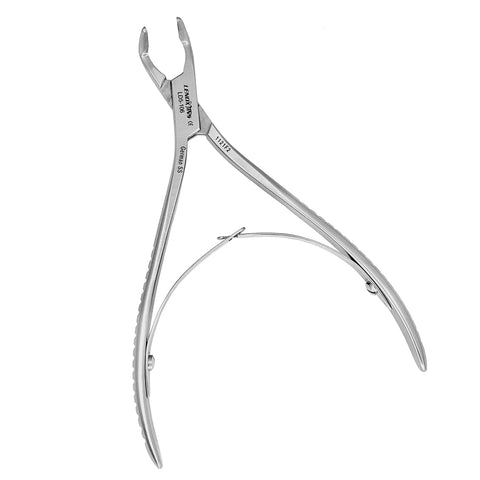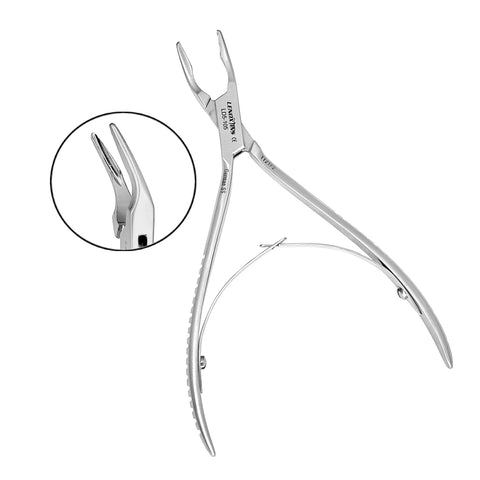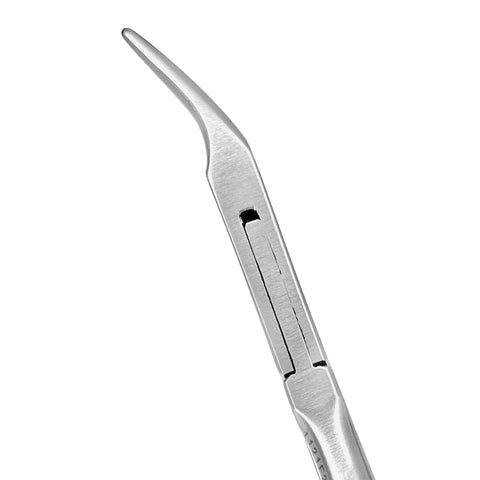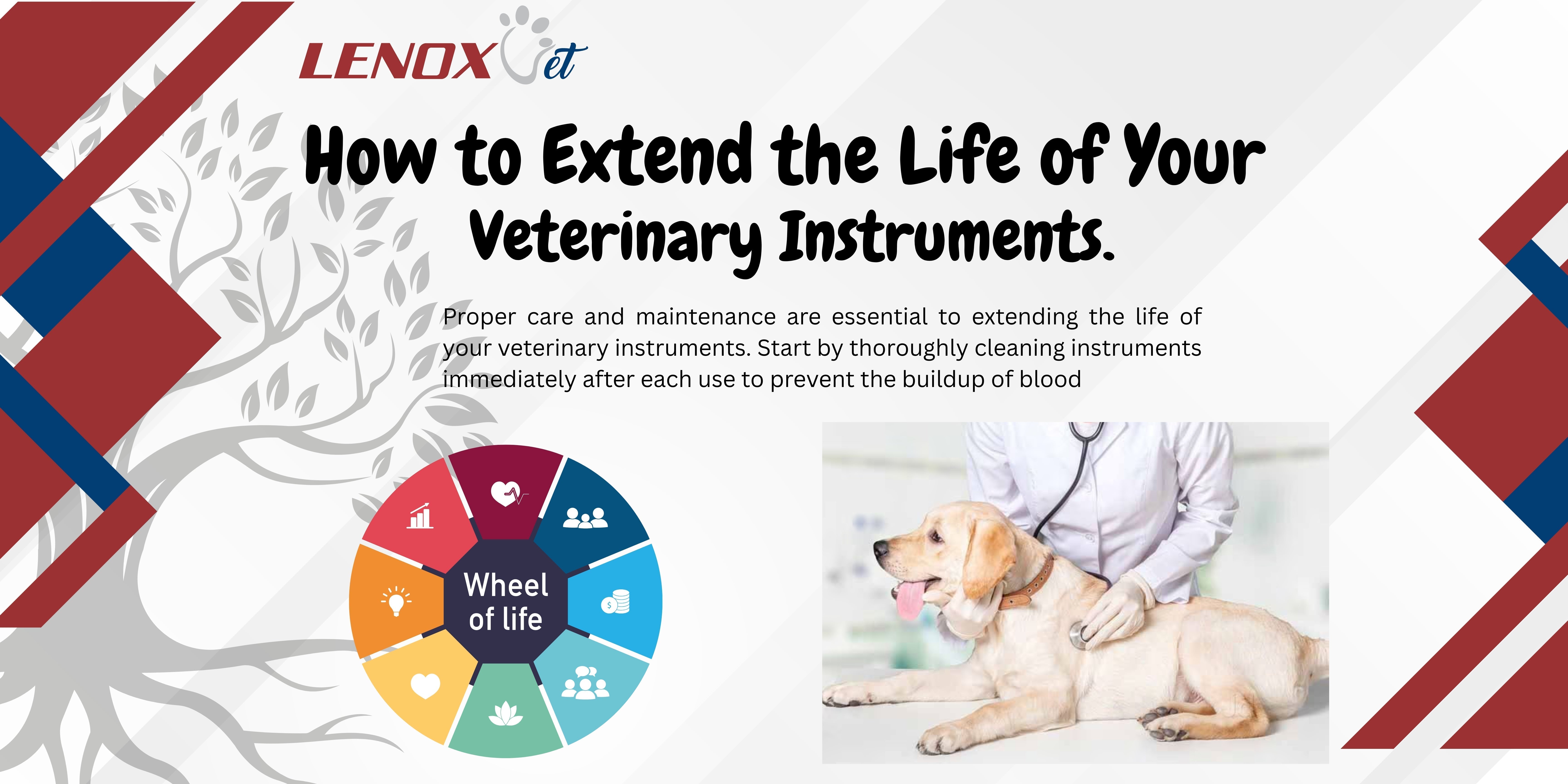
How to Extend the Life of Your Veterinary Instruments
Maximizing the Lifespan of Your Veterinary Instruments: A Comprehensive Guide
Veterinary practices often grapple with escalating costs due to premature instrument wear. However, by implementing systematic care routines, you can significantly extend the functional life of your veterinary instruments, bolster patient safety, and curb replacement expenditures. This guide delves into optimal practices for cleaning, sterilization, corrosion mitigation, routine upkeep, and storage. Each section offers practical strategies and product suggestions from Vettrix Supplies, designed to enhance instrument durability and streamline your clinic's operations.
Mastering the Art of Veterinary Instrument Cleaning
Thorough cleaning is paramount for removing blood, tissue, and biofilm from stainless steel and titanium surfaces, thereby preventing corrosion and preserving instrument functionality. Efficient debris removal is the crucial first step toward effective sterilization and minimizing wear and tear.
Begin cleaning protocols immediately after instrument use to prevent protein setting. Once gross debris is loosened, meticulous rinsing and enzymatic action ensure no residue remains. Proper cleaning also plays a vital role in reducing infection risks and extending the intervals between necessary maintenance. These effective cleaning protocols lay the essential foundation for the reliable sterilization processes we'll explore next.
Elevating Surgical Tool Preparation in Veterinary Settings
This insightful article underscores the critical importance of standardized cleaning protocols, the effectiveness of enzymatic detergents, and the impact of water quality in preventing surgical site infections and prolonging the service life of veterinary instruments. It also highlights the necessity of regular inspection and maintenance for peak instrument performance.
The findings presented in this research directly corroborate the recommendations within this article concerning best practices for cleaning, water quality management, and routine maintenance aimed at enhancing instrument durability.
The Indispensable Role of Proper Cleaning for Instrument Longevity
Meticulous cleaning effectively removes corrosive residues and organic buildup that can etch metal surfaces and impede joint articulation. By employing targeted detergents and appropriate mechanical action, veterinary instruments can maintain smooth operation and robust corrosion resistance. Prompt removal of debris prevents the formation of pitting and staining, which compromise both patient safety and the instrument's overall lifespan.
A Comparative Look at Manual and Ultrasonic Cleaning Methods
Both manual brushing and ultrasonic cleaning excel at removing contaminants, yet their operational mechanisms and efficiency levels differ.
|
Method |
Mechanism |
Advantages |
|
Manual Cleaning |
Utilizing brushes with enzymatic detergents to dislodge debris |
Cost-effective; allows for precise attention to hinge areas |
|
Ultrasonic Cleaning |
Leveraging cavitation bubbles generated by high-frequency sound waves |
Effectively removes microscopic debris; ensures uniform coverage |
Manual cleaning is ideal for targeting intricate joints and serrations, while ultrasonic cavitation reaches deep into internal crevices. Employing a combination of both methods maximizes debris removal and optimally prepares instruments for the subsequent sterilization phase.
Selecting the Most Effective Enzymatic Detergents for Veterinary Tools
Enzymatic detergents work by breaking down protein and lipid residues through specialized active ingredients, thereby accelerating the cleaning process and minimizing the need for extensive manual effort.
· Formulations rich in protease are highly effective at rapidly degrading blood proteins and preventing the formation of films on blades.
· Solutions enhanced with lipase efficiently break down fatty deposits around hinge mechanisms, promoting smoother articulation.
· Neutral-pH multi-enzyme blends, incorporating protease, lipase, and amylase, are adept at tackling complex debris without compromising delicate metal finishes.
The judicious selection of the appropriate detergent can shorten cleaning cycles, preserve the instrument's finish, and significantly reduce long-term maintenance expenses.
Ensuring the Protection and Longevity of Veterinary Equipment Through Sterilization
Sterilization is the process of completely eradicating microorganisms using heat, gas, or chemical agents, thereby safeguarding the integrity of surgical tools and ensuring patient safety. Consistent and effective sterilization cycles also play a crucial role in preserving the inherent properties of metals and maintaining optimal joint performance.
Key Sterilization Methodologies Employed in Veterinary Practices
· Steam Sterilization: Achieved through high-pressure saturated steam at temperatures between 121–134 °C, this method effectively destroys spores and pathogens.
· Ethylene Oxide (EtO): A low-temperature gas sterilization process that can penetrate complex instrument designs without causing heat-related damage.
· Cold Sterilization: Involves immersing instruments in chemical solutions such as glutaraldehyde or peracetic acid, offering an alternative for heat-sensitive tools.
Each sterilization method offers a unique balance of equipment compatibility, cycle duration, and material safety, all contributing to the extended lifespan of your instruments.
Understanding the Mechanics of Autoclave Sterilization for Veterinary Instruments
Autoclave sterilization utilizes pressurized steam in a three-phase process to achieve sterility and maintain the optimal condition of instruments.
|
Phase |
Parameters |
Objective |
|
Heat-Up |
121–134 °C, 15–20 psi |
To expel air and preheat the instruments |
|
Exposure |
15–30 minutes |
To maintain conditions sufficient for eliminating spores and microbes |
|
Drying |
10–20 minutes |
To remove residual moisture and prevent the onset of corrosion |
How Sterilization Indicators Guarantee Effective Instrument Care
Sterilization indicators serve as crucial verification tools, confirming that each sterilization load has met the required conditions for both sterility and instrument protection:
· Chemical Indicator Strips undergo a visible color change when exposed to the correct temperature and steam conditions.
· Biological Indicators (spore tests) provide definitive confirmation of microbial kill under the specified cycle parameters.
· Mechanical Gauges offer real-time monitoring of pressure and temperature throughout the sterilization cycle.
Integrating these indicators into your daily operational workflow is essential for preventing incomplete sterilization cycles and ensuring consistent instrument reliability.
A Review of Best Practices in Surgical Instrument Care and Maintenance
This webinar review emphasizes the critical importance of a comprehensive maintenance strategy for veterinary surgical instruments, detailing effective cleaning techniques, the benefits of ultrasonic cleaners, the advantages of using distilled water, and the significance of proper lubrication and packaging for successful sterilization outcomes.
The insights derived from this review strongly support the guidance provided in this article regarding cleaning protocols, sterilization techniques, and the overall care regimen necessary to extend the functional life of veterinary equipment.
Implementing Effective Strategies to Combat Rust and Corrosion on Veterinary Instruments
Rust and corrosion arise from the interaction of moisture and contaminants with metal surfaces. Implementing protective measures establishes barriers that inhibit these reactions and preserve the quality of the instrument's finish.
The Impact of Water Quality on Rust Formation in Surgical Tools
The mineral content and pH level of water can significantly influence its corrosive potential:
· High Hardness can lead to the formation of scale deposits and pitting on steel surfaces.
· Extreme pH levels can accelerate the chemical degradation of metal finishes.
· Residual Chlorine has the potential to damage the protective passivation layers inherent to stainless steel.
Utilizing deionized or reverse-osmosis water for final rinsing effectively minimizes deposit formation and reduces the long-term risk of corrosion.
Selecting the Right Lubricants and Protective Coatings to Prevent Corrosion
Instrument lubricants and protective coatings create hydrophobic barriers that actively repel moisture:
· Instrument Milk, an emulsion of mineral oil, effectively lubricates hinge areas and prevents rust without leaving undesirable residue.
· Silicone-Based Sprays deposit a thin, durable film that offers excellent resistance to water and contaminants.
· Teflon Coating Sprays bond to metal surfaces, enhancing corrosion resistance and simplifying the cleaning process.
Regular application after sterilization is key to maintaining smooth articulation and protecting critical contact points.
Identifying and Addressing Early Indicators of Corrosion
Early detection of corrosion allows for prompt and effective corrective action:
· Inspect instruments under bright light to identify any discoloration along blades or joints.
· Examine curved surfaces for signs of pitting or micro-abrasions.
· Check cutting edges and serrations for any roughness or dullness.
Addressing these issues immediately through cleaning with mild acidic solutions and reapplying protective coatings can restore instrument integrity and significantly delay the need for extensive repairs.
Essential Routine Maintenance Steps to Extend the Functional Life of Veterinary Instruments
Regular maintenance is crucial for correcting wear patterns and preserving the precision of instruments, thereby enhancing their performance and extending their service intervals.
Establishing a Schedule for Inspecting and Lubricating Veterinary Instruments
|
Instrument Type |
Inspection Frequency |
Lubrication Schedule |
|
Forceps |
Every 3 months |
Following every 10 sterilization cycles |
|
Scissors |
Every 6 months |
After periods of heavy use |
|
Retractors |
Every 6 months |
On a quarterly basis |
Determining When Sharpening or Calibration is Necessary for Surgical Tools
Sharpening and calibration are vital for maintaining cutting accuracy and measurement precision:
· Dull Tip Detection: Assess forceps or scissors for any tendency to snag tissue during use.
· Loose Jaw Alignment: Observe graspers for uneven closure of the jaws.
· Measurement Drift: Check calipers or depth gauges for inconsistent readings.
Promptly addressing these issues through professional sharpening or calibration prevents performance degradation and ensures procedural safety.
How Professional Repair Services Can Support Instrument Longevity
Expert repair services are equipped to handle advanced restoration tasks that go beyond routine care:
· Joint Tension Adjustment: Corrects overly loose or stiff hinges for optimal function.
· Re-Tip Sharpening: Restores cutting edges to their original manufacturer specifications.
· Component Replacement: Installs new rivets, screws, or inserts to renew instrument functionality.
Leveraging professional expertise is key to maximizing the useful life of your high-quality veterinary surgical instruments.
Optimal Storage and Handling Techniques for Maximizing Veterinary Instrument Durability
Proper storage and handling are essential for minimizing mechanical stress, environmental exposure, and contamination risks, thereby preserving the integrity of your instruments.
Best Practices for Organizing and Utilizing Sterilization Trays
Effective tray setup is crucial for preventing instrument damage and ensuring successful sterilization:
· Position instruments on silicone mats to provide cushioning and prevent metal-on-metal contact.
· Arrange instruments by type, avoiding overcrowding, to allow for adequate steam or chemical penetration.
· Align tray perforations with steam jets to ensure uniform coverage throughout the sterilization cycle.
Well-organized trays help protect the instrument's finish and contribute to consistent sterilization outcomes.
The Influence of Environmental Control on Instrument Safety and Longevity
Maintaining stable environmental conditions is vital for inhibiting corrosion and preventing microbial growth:
· Keep relative humidity within the 40–60% range to minimize moisture accumulation.
· Store instruments at temperatures between 15–25 °C to prevent condensation and material fatigue.
· Utilize desiccant packs in enclosed cabinets where humidity levels may fluctuate.
Controlled environments are instrumental in preserving passivation layers and preventing rust formation.
Handling Techniques to Minimize Wear and Contamination Risks
Adopting aseptic handling practices and careful placement techniques reduces contact damage and contamination risks:
· Grip instruments by their shanks or hinge areas to avoid inadvertently marking cutting edges.
· Refrain from sliding metal surfaces directly against one another.
· Employ dedicated drying racks with individual slots to maintain instrument separation.
Consistent adherence to these handling protocols helps preserve the instrument's finish and ensures sterility between uses.
Frequently Asked Questions (FAQs)
Why is thorough cleaning crucial for veterinary instruments?
Thorough cleaning is paramount for removing blood, tissue, and biofilm from instrument surfaces. This prevents corrosion, preserves functionality, and is the critical first step towards effective sterilization, ultimately minimizing wear and tear and reducing infection risks.
What are the primary sterilization methods used in veterinary practices?
The main methods include Steam Sterilization (autoclaving) for heat-resistant tools, Ethylene Oxide (EtO) for heat-sensitive and complex designs, and Cold Sterilization using chemical solutions for delicate instruments.
How does water quality impact the longevity of surgical tools?
Water quality significantly affects instrument longevity. High hardness can cause scale deposits and pitting, extreme pH levels accelerate metal degradation, and residual chlorine can damage protective passivation layers. Using deionized or reverse-osmosis water for rinsing minimizes these risks.
How often should veterinary instruments be inspected and lubricated?
Inspection and lubrication schedules vary by instrument type. Forceps typically require inspection every 3 months and lubrication after every 10 sterilization cycles. Scissors and retractors generally need inspection every 6 months, with lubrication for scissors after heavy use and retractors quarterly.
What benefits do professional repair services offer for surgical instruments?
Professional repair services can perform advanced restoration tasks such as joint tension adjustment, re-tip sharpening to manufacturer specifications, and component replacement (rivets, screws, inserts). This expertise is vital for maximizing the useful life of high-quality instruments beyond routine care.
Conclusion
By embracing these five fundamental pillars of instrument care—cleaning, sterilization, corrosion prevention, maintenance, and storage—veterinary professionals can significantly extend the lifespan of their instruments, enhance patient safety, and optimize clinical efficiency. Implementing these systematic routines not only safeguards your valuable surgical assets but also contributes to a more reliable and cost-effective practice. Rely on Vettrix Supplies' comprehensive care solutions to support every stage of this process and ensure the enduring performance of your clinic's essential equipment.
